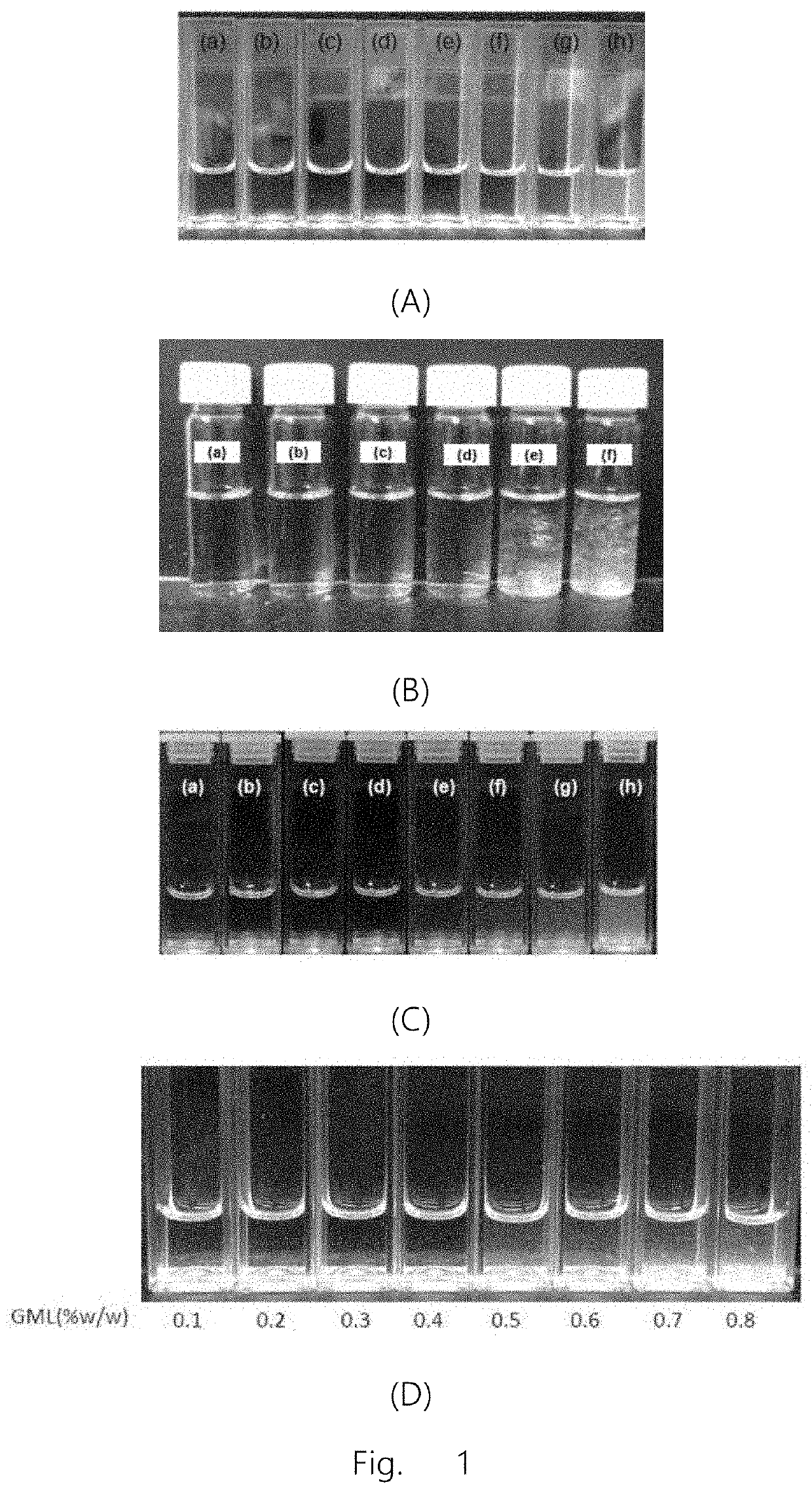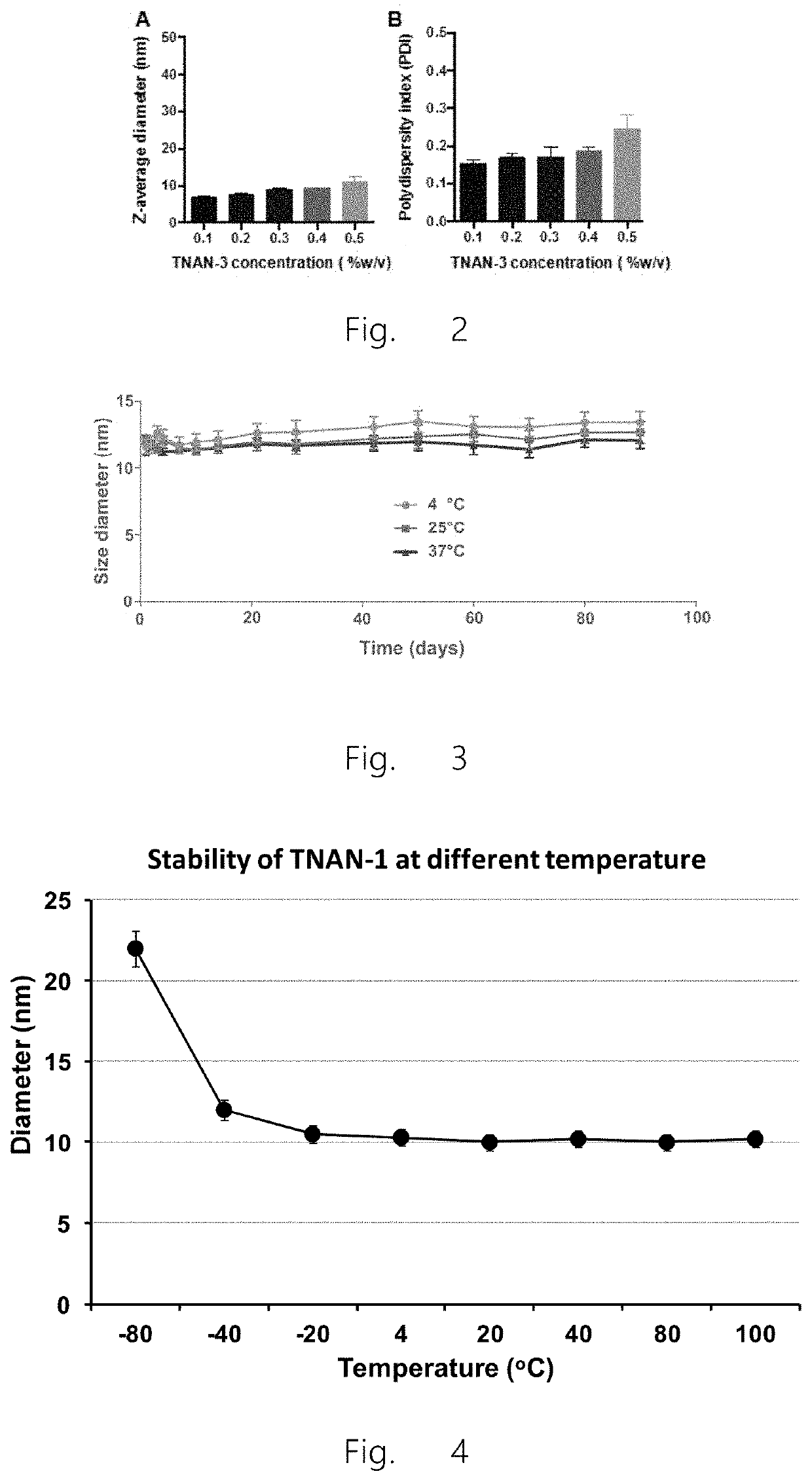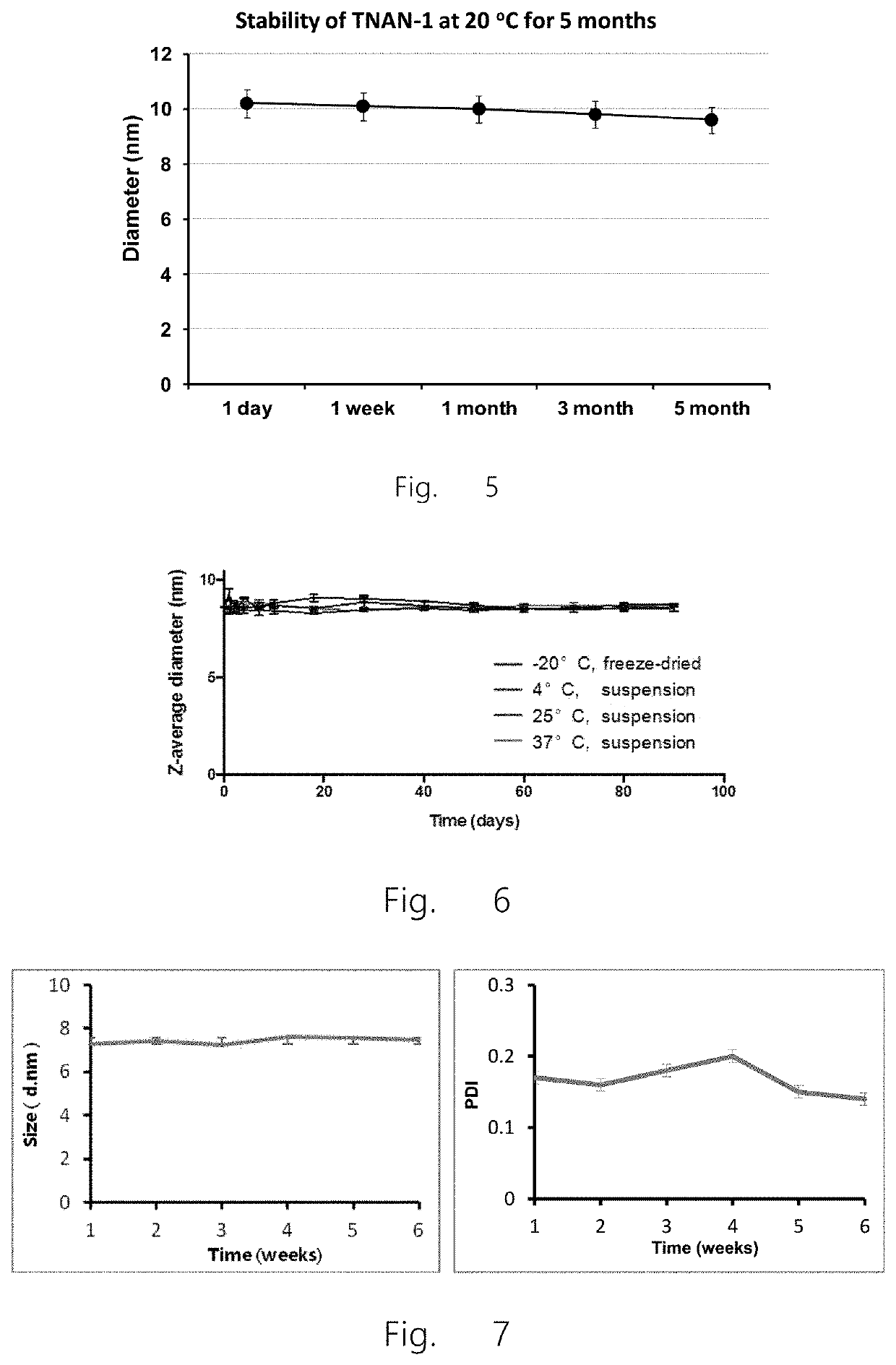Highly stable non-vesicular nanoparticles and application thereof in treating microbial infection
a nanoparticle, non-vesicular technology, applied in the field of medicine, can solve the problems of vancomycin only inhibiting mrsa instead of eradicating, emergence of drug resistance and new threats to human health, lack of effective treatment, etc., and achieves excellent stability, high safety, and significant antibacterial activity.
- Summary
- Abstract
- Description
- Claims
- Application Information
AI Technical Summary
Benefits of technology
Problems solved by technology
Method used
Image
Examples
example 1
on and Characterization of Nanoparticles of the Invention
[0223]The nanoparticles of the present invention were prepared as described in the “Materials and Methods” section.
[0224]The hydrodynamic particle size of the nanoparticles of the present invention is described by two parameters: z-average particle size and polydispersity index, both of which are calculated by cumulant analysis of dynamic light scattering measurements.
[0225]By varying concentration of linolenic acid, a series of nanoparticles were prepared by the inventors and tested to determine the optimal dosage form. As shown in FIG. 1A, the solution appears clear and transparent (d) when the concentration of linolenic acid is 1% w / v, wherein the average particle diameter of the nanoparticles of the present invention is 10 nm, and polydispersity index is 0.2. Therefore, the nanoparticles selected in subsequent experiments contained 1% w / v linolenic acid with a mass ratio of lipid to surfactant as 2:1 (also referred to here...
example 2-1
tibacterial Activity of the Nanoparticles of the Invention-1
[0230]In vitro antibacterial activity of the nanoparticles (linolenic acid) of the present invention against MRSA252 was evaluated by examining the bacteriostatic and bactericidal effects of different concentrations of the nanoparticles of the invention when co-incubated with bacteria. In the study, the minimum concentration of nanoparticles of the present invention inhibiting bacterial growth (MIC) was firstly measured. In particular, 1×106 CFU of MRSA252 was co-cultured with the nanoparticles of the invention at a concentration of 0-0.6% w / v. The liquid of bacteria co-cultured with the nanoparticles of the present invention in a concentration of not less than 0.1% w / v maintained clear, indicating that at this concentration, bacterial growth was significantly inhibited (FIG. 8A). In contrast, when the concentration of the nanoparticles of the present invention was less than 0.1% w / v, the bacterial culture liquid becomes tu...
example 2-2
tibacterial Activity of the Nanoparticles of the Invention-2
[0234]The nanoparticles of the present invention (1% w / v lauric acid) was co-incubated with different concentrations of P. acnes (1×106 CFU / mL, 1×107 CFU / mL, 1×108 CFU / mL and 1×109 CFU / mL) at 37° C. for 5 hours to test in vitro antibacterial activity thereof. After co-incubation, samples were diluted with PBS at a dilution of 1:10 to 1:106 and then 10 μL of each sample was taken and plated on RCM agar plates. Samples were incubated for 3 days at 37° C. in anaerobic conditions and then CFUs of P. acnes were counted. As shown in FIG. 12, the nanoparticles of the invention can completely kill P. acnes when the bacterial concentration was below 1×107 CFU / mL. When the bacterial concentration increased to 1×109 CFU / mL, the nanoparticles of the present invention can reduce bacterial load by up to 5 orders of magnitude with a residual bacterial concentration of approximately 1×104 CFU / mL, which means that at high concentrations of ...
PUM
| Property | Measurement | Unit |
|---|---|---|
| particle size | aaaaa | aaaaa |
| particle size | aaaaa | aaaaa |
| particle size | aaaaa | aaaaa |
Abstract
Description
Claims
Application Information
 Login to View More
Login to View More - R&D
- Intellectual Property
- Life Sciences
- Materials
- Tech Scout
- Unparalleled Data Quality
- Higher Quality Content
- 60% Fewer Hallucinations
Browse by: Latest US Patents, China's latest patents, Technical Efficacy Thesaurus, Application Domain, Technology Topic, Popular Technical Reports.
© 2025 PatSnap. All rights reserved.Legal|Privacy policy|Modern Slavery Act Transparency Statement|Sitemap|About US| Contact US: help@patsnap.com



